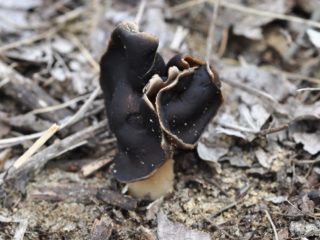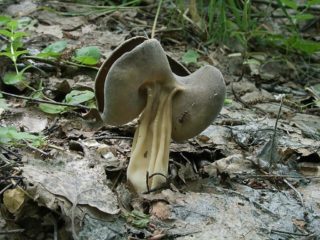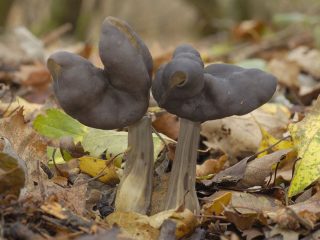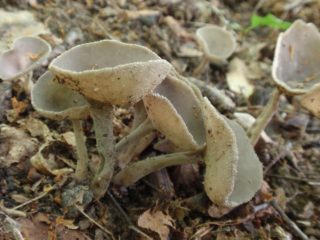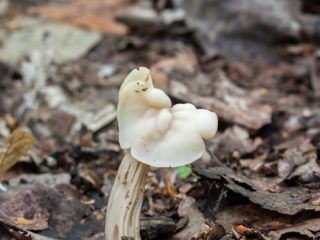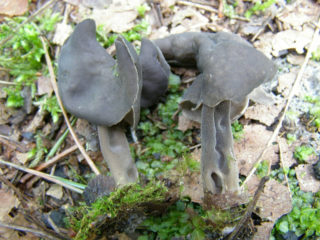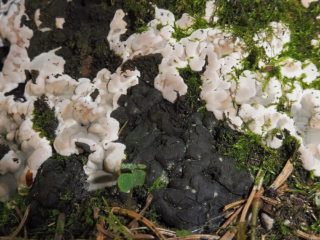Content
The goblet lobe is a representative of the genus of the same name, the Helvellaceae family. Other names are Helwella cublet or Acetabula ordinary. The mushroom belongs to the conditionally edible category.
What do the goblet blades look like?
The diameter of the fruit body is from 2 to 5 cm. The mushroom has a fleshy-leathery structure and a goblet shape, which gradually expands as it grows.

At the edges, the cap is often wavy or lobed
At the edges, the cap is often wavy or lobed
The inner surface is smooth to the touch, with a hymenial layer. Its color ranges from buffy brown to brown. The outer surface has a lighter color and a granular-fine-flaked rough structure.
The goblet lobe is distinguished by a thick, relatively long, wrinkled stem from 1 to 3 cm in height.

Inside the leg is hollow, on the outer whitish tone of the part, ribbed longitudinal projections can be seen
The pulp of the mushroom has no characteristic taste and aroma, has a very thin and brittle structure. The size of colorless spores is 14-18 * 8-12 microns. With a characteristic oval smooth shape, they are arranged in one row.
You can learn more about the appearance of the mushroom in the video:
Where do the goblet blades grow
Glacial lobes are quite rare, grow singly or in small colonies. Distributed in oak forests. The period of active fruiting begins in May and lasts until June. The main habitats are Europe, Asia and North America.
Is it possible to eat goblet blades
The species belongs to the conditionally edible group. Fruit bodies can only be eaten after preliminary heat treatment.
Almost all representatives of the Gelwell family are characterized by the content of toxic substances. In the composition of some species, such dangerous elements as gyrometrin or muscarine may be present, which are completely impossible to remove from the fruiting bodies.
False doubles
The main false twin of the species is Kele's lobe. It can be distinguished by its specific shape in the form of a bowl flattened on the sides and a developed leg.
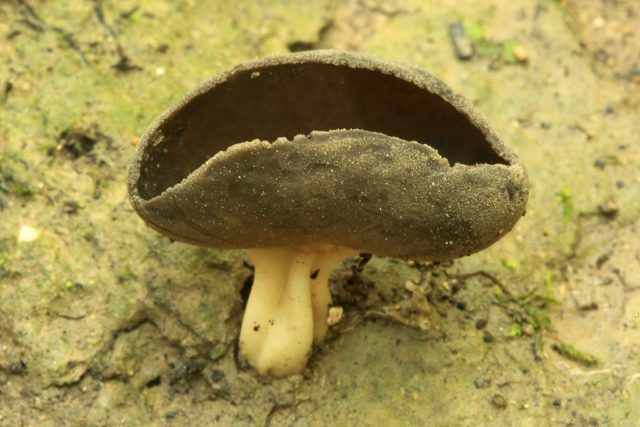
The outer surface of the cap is dark gray, yellowish gray, brown or brownish gray in color.
When the fungus dries, its color changes to a lighter one, a grayish or whitish granular plaque from conical bundles of short hairs appears on the surface. The inner part of the cap is smoother in structure, with a brown-gray, dark brown or completely black color.
Collection rules
Mushroom pickers recommend to bypass the shovel-shaped side due to the content of toxic substances in the composition and the low nutritional value of the mushroom. Even long-term heat treatment cannot guarantee getting rid of all poisons, because of which eating the fruiting body can provoke poisoning.
If the goblet helwella is nevertheless in the mushroom basket, after collecting it, it must be boiled immediately. Otherwise, the mushrooms will begin to deteriorate quickly, which increases the concentration of toxins.
Use
If you want to use the goblet blade for culinary purposes, it is important to remember that it is strictly forbidden to use specimens in their raw form: this will provoke serious poisoning. Mushrooms must be boiled for 20-30 minutes and only then added to various dishes. The product can be used for frying, drying, and also as an ingredient in salads.
Conclusion
Sauerkraut is a conditionally edible mushroom that grows in the oak forests of Europe, Asia and North America. It can be distinguished by its light wavy cap and thick, slightly wrinkled stem. Fruiting bodies of this species contain toxins, which is why it is allowed to eat the mushroom only after prolonged heat treatment.
